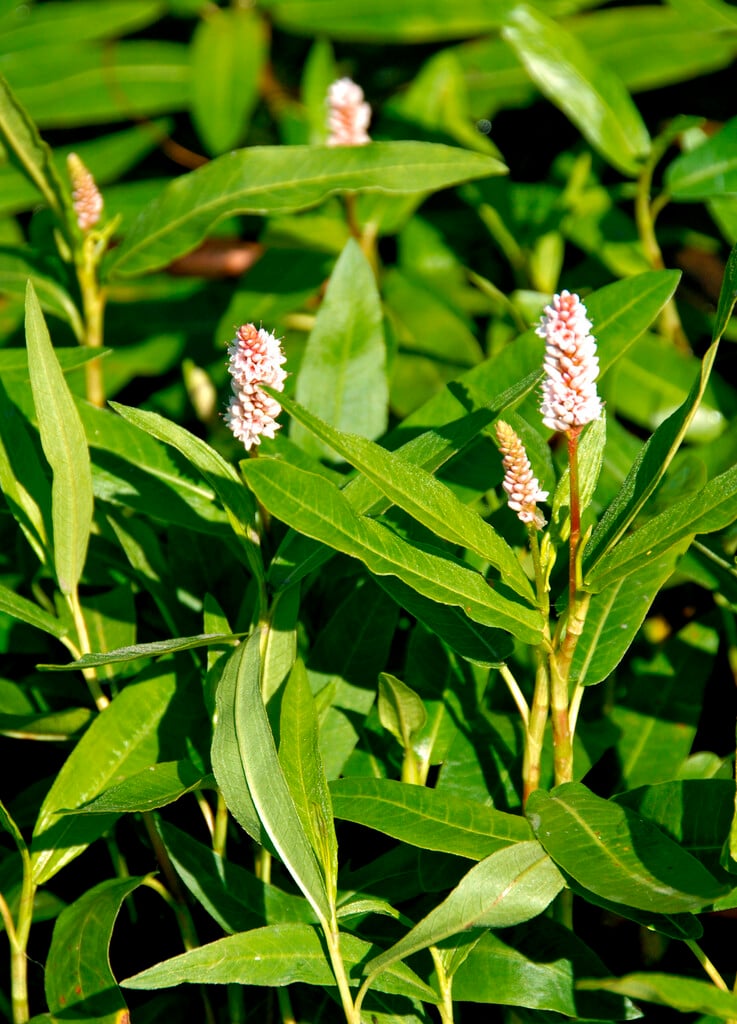Persicaria amphibia
amphibious bistort
A perennial marginal or aquatic plant, with long, slightly glossy green leaves with paler green veins. Produces short spikes densely packed with tiny pink flowers, from mid summer to early autumn
Other common names
amphibious knot grassfloating polygonum
see moreground willow
water buckwheat
willow grass
heart's ease
water willow
Synonyms
Polygonum muhlenbergiiPolygonum amphibium
Size
Ultimate height
0.1–0.5 metresTime to ultimate height
2–5 yearsUltimate spread
0.5–1 metresGrowing conditions
Moisture
Moist but well–drained, Poorly–drainedpH
Acid, Alkaline, NeutralColour & scent
| Stem | Flower | Foliage | Fruit | |
| Spring | Green | |||
|---|---|---|---|---|
| Summer | Pink | Green | ||
| Autumn | Pink | Green | ||
| Winter |
Position
- Full sun
- Partial shade
Aspect
East–facing or South–facing or West–facing
Exposure
Exposed or Sheltered Hardiness
H7Botanical details
- Family
- Polygonaceae
- Native to GB / Ireland
- Yes
- Foliage
- Deciduous
- Habit
- Submerged, Floating
- Genus
Persicaria can be annuals, herbaceous or evergreen perennials or sub-shrubs with simple leaves and small bell-shaped white or pink flowers in long-lasting spikes or panicles
- Name status
Correct
How to grow
Cultivation
Grow as a marginal or bog plant in moist soil, or as an aquatic plant at up to 80cm depth. Flowers best in full sun. Lower young aquatic plants in stages, allowing them to grow at each stage until the leaves float on the surface of the water. Divide regularly to avoid congestion. Has the potential to become a nuisance if not managed well. See aquatic weeds, pond plants and bog gardens for further advice
Propagation
Propagate by seed or by division
Suggested planting locations and garden types
Pruning
No pruning required
Pests
Generally pest-free
Diseases
Generally disease-free
Love gardening
Sign up to receive regular gardening tips, inspiration, offers and more
View our Privacy Policy
Get involved
The Royal Horticultural Society is the UK’s leading gardening charity. We aim to enrich everyone’s life through plants, and make the UK a greener and more beautiful place.
